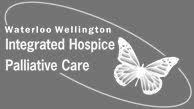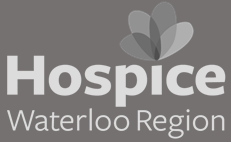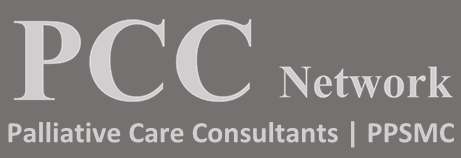Intake Changes at the End of Life (EOL)
As the body declines in advanced illness (dementia, frailty, cancer, COPD, CHF etc.) it loses ability to process food and fluids in the same way. As an illness progresses, it is important to recognize that food and fluids are no longer providing the same nutritional benefit, and can often cause nausea, vomiting, or bloating. The body then begins to protect itself by reducing appetite to lessen intake.
Common Syndromes Affecting Intake in Advanced Illness
With progressing illness, patients may experience anorexia (loss of appetite) that can contribute to reduced intake and weight loss. Other patients may still be eating their usual, or increased intake, but suffer from increasing weight loss. This is often caused by cachexia, a response in the body causing rapid breakdown of proteins, lipids, and carbohydrates. (1) Learn More (2)
Normal Intake Changes & Interventions as a Patient is Approaching Death
In the last days and hours of life the patient’s body continues to shut down, and the patient:
- sleeps more and is unable to use nutrients from food (1,3)
- may have minimal or no appetite
- may have no sensation of thirst and may have decreased intake of fluids
- may be unable to safely swallow due to decreased alertness or fatigue (1,3)
- may exhibit signs of dehydration and is part of the natural dying process
Ways you can Support your Patient & their Family Around Intake at EOL
- Complete ongoing swallowing assessments to determine if the patient can safely be provided food/fluids upon request.
- Provide routine mouth care (4) to prevent dry mouth, cracked lips, mouth sores and thirstiness sensation. (5)
- Feeding should be “for pleasure only” at this time and consist of the patient’s favourite foods/fluids, if requested by the patient
- If the patient is not asking for any food/fluids, then we do not need to offer or push them to try and eat/drink during the EOL phase. (1,3)
- Check to see if the patient is hungry before bringing in food. Start by offering a small portion, as a large portion can be overwhelming; you can always get more if needed.
- Have a small collection of some of their favourite foods and drinks on standby (ice cream, puddings, sweets, soups/broths, sodas etc.) in case they would like to have a bite or sip of something they normally enjoy and be prepared that this can change from day to day. (5)
- As humans we often connect around food and that makes it all that more difficult during this final phase of life. You might encourage family and staff to connect with the patient in other ways such as gentle touch or massage, repositioning patient/pillows/bedding, helping to wash them, talking with them, reading to them, sharing stories/memories, therapeutic silence, and listening to patient’s favourite music or TV shows/Movies etc. (5)
- Artificial nutrition or fluids are rarely offered at EOL because they typically have no tangible benefits to the patient’s body that is naturally shutting down to prepare for death. These interventions do not change or stop the natural dying process and can cause negative symptoms and adverse events for the patient. (1,3)
Resources to Support Informal Caregivers
- When Someone is Dying: What can I expect? What can I do? (6)
- This sector-specific pamphlet is for families. Pg. 5 provides an overview on what loved ones can expect around food and fluid intake at EOL. Community, Long Term Care, Hospital)
- A Caregiver’s Guide: A Handbook about End-Of-Life Care (5)
- This handbook provides caregivers with information on EOL care. Pgs. 51-59 and pgs. 116-117 discuss intake, how not being hungry/thirsty are parts of the natural dying process and offers tips on how families can support their loved one.
- Strengthening a Palliative Approach in LTC: What to Expect at the End of Life(7)
- This video focuses on the LTC sector and provides an overview of the natural changes at EOL and reviews the changes in food/fluid intake that occur.
Resources
- Pallium Canada. (2016). The Pallium Palliative Pocketbook: A peer-reviewed referenced resource. (2nd Ed.). Ottawa, Canada.
- Harlos, M. (2019). Canadian Virtual Hospice Article: Lack of Appetite and Loss of Weight.
- Harlos, M. (2019). Canadian Virtual Hospice Article: When Death is Near.
- Canadian Virtual Hospice. (2012) Personal hygiene: helping with mouth care [Video]. Vimeo:
- The Military and Hospitaller Order of St. Lazarus of Jerusalem (2004 & 2014). A Caregiver’s Guide: A Handbook About End-Of-Life Care.
- HPC Consultation Services, Waterloo Wellington
- SPA-LTC
Download Tip of the Month




